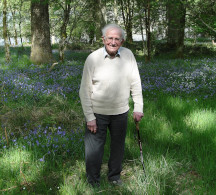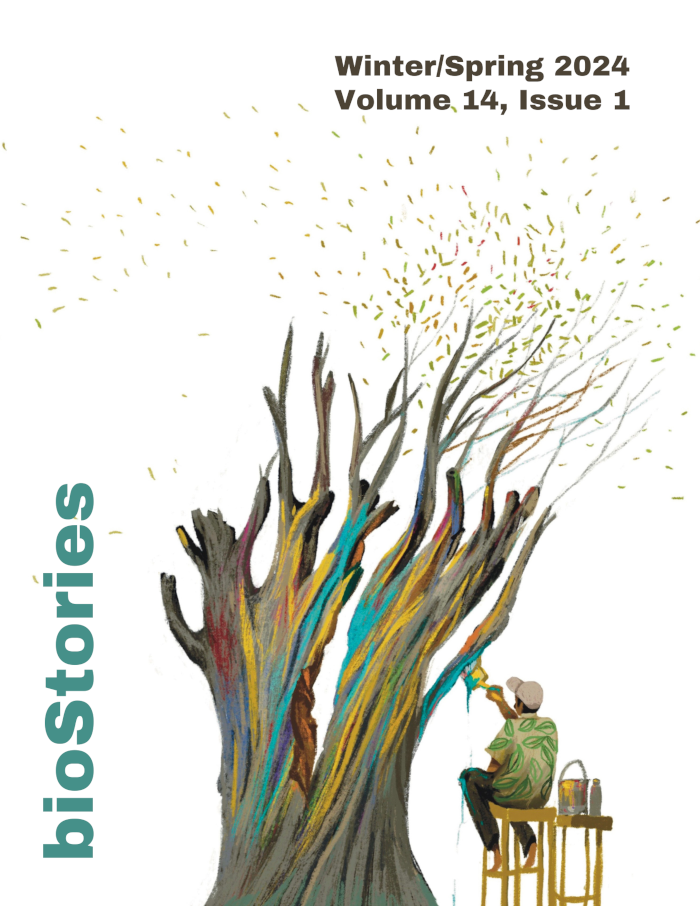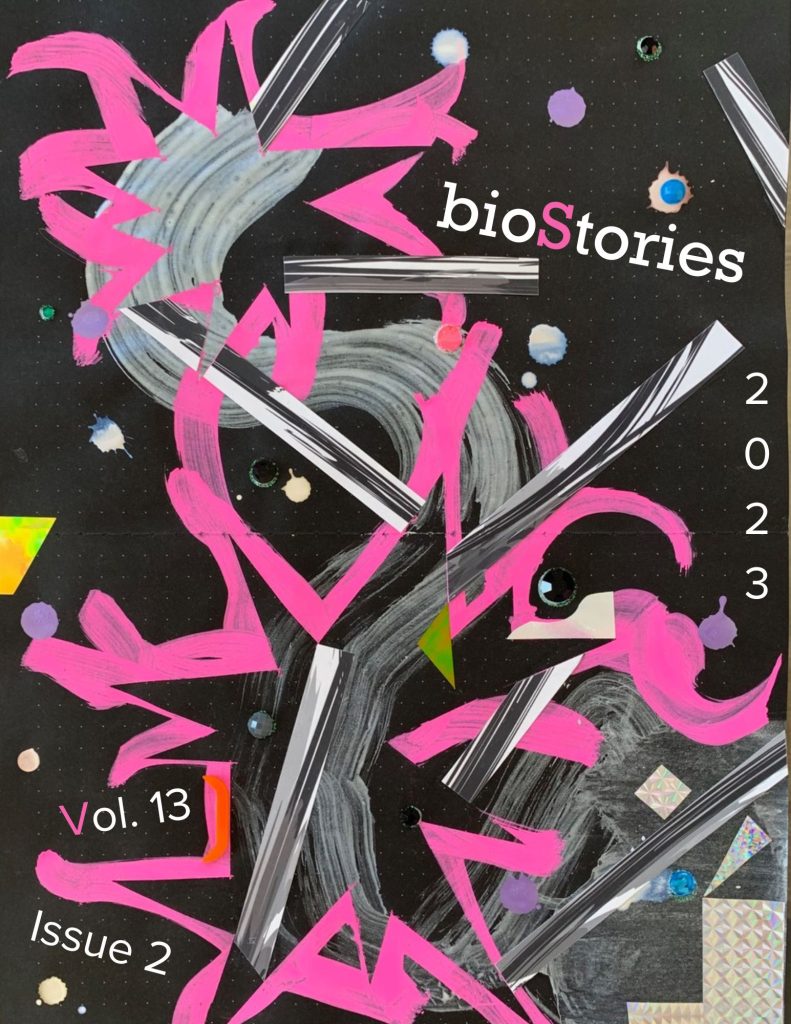We feature new essays every Wednesday; make it a weekly habit to stop by and be enchanted by our eclectic content.
This week: Learning to see through the eyes of our immigrant ancestors.
Weekly Featured Essay
Speaking of the Dead
by Chris Vrountas
I am a grandson of immigrants from what some might have called a “shithole country.” My grandparents were poor, from poor villages, from a poor part of the world. They were not just data points wrapped in olive skin speaking a foreign language and cooking funny smelling food. They were husbands and wives, fathers and mothers, sons and daughters, laborers and artists, lovers and mourners, leaders and failures, fighters and dreamers. They were people, like all other people. Yet, like immigrants today, my family and others similarly situated were viewed upon their arrival in the US by some American leaders as “new immigrants” who threatened to make “a great and perilous change in the very fabric of our race,” as Henry Cabot Lodge, the Senator from my home state, once wrote over 100 years ago. Sadly, very little has changed.
My immigrant grandparents are all dead now. But they continue to whisper to me. They tell me to open my eyes and open my heart. Listening to their whispers, I see the new arrivals at the southern border through their eyes. I see the threat to suspend habeas corpus through their eyes. I see the denial of personhood and citizenship guaranteed under the Fourteenth Amendment through their eyes. I see the pretextual complaint about “illegal immigration” through their eyes while their descendants demand changes to laws to keep new immigrants out of the country immigrants built. Looking through their eyes, I share their terror at seeing immigrants who have committed no crimes taken off the street in surprise arrests.
READ MORE
MORE ESSAYS
To Stary Y, BioFather
by Beth Cleary
To Star Y:
This letter hails you in the outer reaches of my firmament. You throb there but are not visible, will never be visible—like a boson star collapsed into nothingness but still exerting gravitational pull. My words pour through my fingers and, for the first time, I give you a name—Star Y—and sense the nearly imperceptible tether threading me, mortal daughter, to you, far gone not-father, hapless and possibly violent co-maker of me.
I think often of the constellations in my sky. Parents, of course, they who adopted me, now each again of the stars. I wouldn’t say I’m guided by them, as some say of stars, but they gave me the sextants, sights for navigating this life. Now gone and dim, their tow still startles me: mother’s quick gait in a stranger’s walk, father’s kind voice at the grocery store, Ramblin’ Rose on the oldies station. When I pick up a hammer, my father hefts the tool. When I set a table, my mother worries where the spoons go. They are polestars in my Alpha Centauri. Family, friends, dogs, teachers who’ve left this world—they are there, too, brightest on anniversary days and seasons, sometimes whizzing like comets through my heart when I hear a certain song, pass a particular restaurant, see an idle fetch ball in the garden. Here below, gravity holds me alongside beloved husband, sister, friends, earthly stars. I twirl, tend, and cry with them. Like all stars, they contain light and reflect it beyond themselves. Like all stars, except the failed ones, they are life itself.
Stating the Obvious
by Paige Cromley
Like most things about myself, I only realize the obvious when someone points it out.
“You talk like a kid,” my friend says. It’s finally warm, and he’s in a t-shirt, shorts. We’re sitting on a stretch of grass, idly wish-hunting from a blanket of clovers
I’m immediately offended. I was a late bloomer in high school, always a little wide-eyed for my year, always a bit behind. At college, I’m sensitive to such things. I want people to think I’m serious, or at least that I have serious things to say. I ask Jonah what he means.
“You just say silly things sometimes.”
I glance down at my hands. They’re deep in clovers, gently parsing through leaves. I press back. When’s the last time I said something silly?
“Just now. You were like, ‘There goes a cloud.’”
I had said that. But only because a cloud had, in fact, passed over us.
“That’s just me pointing things out,” I say. My voice is defensive and a bit whiny. I sound young, even to myself. “You pointed out the dog in the boots.”
But that was different. A dachshund in slippers is unusual, noteworthy. The cloud I’d mentioned was just a fluffy old thing, dragging through the sky like any other. It wasn’t even shaped like a bird, or a lopsided Florida.
“You say things sometimes that you don’t need to,” Jonah says. “It’s not a bad thing, you’re just excitable.” I curl my fingers into a tangle of grass. Jonah is turning remarks into compliments. Usually, his whole mannerism works to smooth my self-consciousness. But when I get up, brush off my knees, I’m hyper-aware of the words I let slip.
Nostalgia: A Haunting of the Heart
by Anne E. Beall
Nostalgia (Noun): a wistful or excessively sentimental yearning for return to or of some past period or irrecoverable condition—Merriam-Webster.com
Dear Nostalgia
Lately, you’ve been visiting a lot. You slip into my life uninvited, then vanish before I can confront you. You wait for the perfect moment to latch onto me and pull me backward. By the time I realize what you’ve done, you’re already gone.
And I have some things I need to say to you.
You’re a collector, Nostalgia. You gather my life’s most fragile moments, carefully cataloging them like artifacts. But you don’t preserve them to cherish—you sharpen them, turning them into weapons. Then, at the worst possible times, you wield them against me. A song, a photograph, a familiar scent—it’s all you need to strike. What might seem small and harmless becomes unbearable in your hands, as you remind me not just of what I’ve lost, but of how I’ll never get it back.
Last month, you crept up while I was loading the dishwasher, my hands submerged in warm water as I rinsed a mucky plate. My thoughts wandered idly to the brown water stain streaking the cream-colored stucco of my neighbor’s house, the way it stood out like a tear track on an otherwise pristine face. I was glad we’d removed those rust stains I found on our home last month. I thought about how thankful I was for my husband’s dinner that night as I scraped the remnants off our plates. Scallops and mussels sautéed in garlic butter, served over spaghetti. The richness of it still lingered on my tongue.
Isn’t life good? I thought. And then, without warning, there you were.
The Heat of the Why
by John Thomson
I hadn’t seen his mother in over fifty years. But I had reason to visit her again during a heat wave near the town where I grew up.
It was one of the hottest days ever recorded there. We sat inside the stuffy living room of her mobile home and began talking about her son, my friend, whom she still called “Stevie.” At first, we reconnected memories, like sagging fence wires. She listened as I recalled how I met Steve in elementary school, how he and I stayed connected through all the intimidations and pressures of high school and marriages and different politics and the barriers of geographical distance. Recounting the history of my relationship with Steve helped his mother talk more freely about her son’s death, just a month prior.
Summer Reading
by Kevin A. Louderback
I have a problem. It’s a serious problem because I can’t ignore it, rationalize it, or forget about it, and it has fundamentally changed how I engage with the world.
My eyesight has rapidly degraded over the past decade. And while I don’t know for sure that blindness is in my future, my problems go beyond simple eyestrain or acute light sensitivity or anything an ophthalmologist has been able to help me with beyond recommending stronger and stronger prescriptions. I’m forty-five years old, and my vision has gotten worse with age, as it does with every human, but apart from that, I experience a throbbing in my left eye and a burning sensation in my right. It’s a pain that migrates through my skull, radiates through my teeth, and will escalate into a spiteful demon fever if I don’t simply stop reading. Sometimes, for relief, I have to wear a cold mask—think Patrick Batemen in American Psycho, when he’s telling us about his morning routine—and for the rest of the day strive to look at absolutely nothing closely, just stay behind dark glasses inside dark rooms, if possible. I’ve been living on a steady diet of black coffee and fat blue Naproxen gelcaps.
Singing: A Requiem
by Gary Fincke
Mr. Bell was the elementary school music teacher. He had a raspy voice and used a small round tuner he blew into to get us searching for the correct pitch twice a week when he visited our room while our teacher Mrs. Sowers disappeared for forty minutes. We sang “Dixie” and “The Battle Hymn of the Republic” and “The Marine Corps Hymn” from the stapled book full of uplifting songs we stored in our desks between his visits. In September, Mr. Bell had told us we were all blessed to be born under a fortunate flag. For our first sixth-grade music exam in October, he’d listened to us sing, one by one, “The Star-Spangled Banner” from memory, placing us exactly under the flag for our performances.
There was more to it than moving our mouths, he’d explained, showing us the proper posture for singing the National Anthem, his back as straight as a soldier at attention. All of us learned to keep eye contact with a spot slightly above his head so we looked patriotic and proud, working our way through the a cappella praise for what he called “our home.”
What I remember most clearly about Mr. Bell is that in January, for a PTA meeting, he chose eight sixth graders to sing “America the Beautiful” and “Beautiful Dreamer” for a room full of mothers and two fathers. By late summer, my singing voice would turn tentative and tenor, but on that January night I confidently carried those tunes in close harmony with Paula P, Nancy H, Jim D, Dave S, and three others, all of us soprano and alto. Mr. Bell introduced us by name, and we were a hit.
On War, Love, and Loss: A Life in Three Acts
by Elizabeth Bird
Prologue
I watch over my father as he fades slowly into darkness. Nurses flit by, chatting quietly.
“We hardly got to know Tom, but he seemed like a lovely bloke,” says one.
“He told wonderful stories,” adds another. “So funny—and exciting!”

I ask what kind of stories. The family, his life as a doctor—surely the story of meeting my mother?
“Oh no, love. War stories! One about picking up stranded Dutch soldiers some-where in the Pacific, I think. Quite dramatic!”
As his final hours drift by, I think on my father’s life—the joy in his roles as husband, father and grandfather, and the love and kindness he showed in his ninety-five years on earth. And how the legacy of war helped shaped that life, casting shadows and yet guiding him into sunlight.

